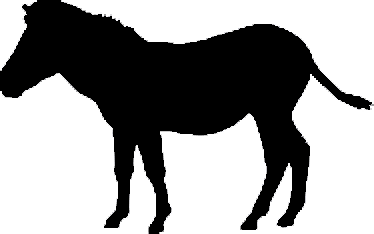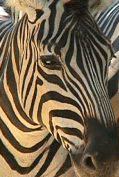| Author | Message | ||
oliver bause (Unregistered Guest) Unregistered guest Posted From: adsl-98-67-119-250.shv.bellsouth.net |
i am doing a science fair project and i need to know how they are different please help me!! | ||
TERRY COOPER JR. (Unregistered Guest) Unregistered guest Posted From: ip-64-178-228-172.nefcom.net |
My Child has a science project on fingerprints, on how they differ... can you help? Webmaster note: Yes, please read below. | ||
brensev (Unregistered Guest) Unregistered guest Posted From: ool-18bebef0.dyn.optonline.net |
What is the best way to do a science project on how fingerprints differ? Webmaster note: Recommend starting by reading the below information, including documents contained in the links. | ||
Webservant (member) Moderator Username: member Post Number: 201 Registered: 03-1997 |
Fingerprints differ in Level 1, 2 and 3 detail as explained in the frequently asked questions at this website. You can view these differences with a magnifying glass, or by creating enlarged images. If you do not have a scanner to capture fingerprint images, you may use any digital camera with close-up focusing capability. Another option is to request your school's assistance through use of their copy machine. Almost all copy machines have enlargement capabilities. Thus, you can copy a fingerprint at a 200% or 400% enlargement setting to double or quadruple the size of the original image... and then do the same to the resulting image to create an image much larger than the original fingerprint. By adjusting the contrast settings on the copier, you can create images suitable for easy viewing and inclusion in your science project. Originally posted on 17 Jan 2001 in response to the query "Why is Every Fingerprint Different?" Many factors affect individual friction ridge (fingerprint) shape and path. Developmental stress and other environmental factors in the womb cause unlimited variety in friction ridge formations. In expert testimony summarized on page 6 here, Dr. William Babbler explained why all friction ridge skin is different: "...environmental factors, including chemicals taken into the body, the differential growth and development of the bones in the hands, and the actual dimension of the bones themselves contribute to the variation noted in the friction ridge skin." Fingerprint experts think of friction ridge detail in three levels. If you were to compare these to levels of detail describing a zebra, the three levels might be as follows: Level 1 could be an outline image with enough detail so that from the general shape or pattern it appears to be a zebra. From this level of information, you can eliminate giraffes and cows, but you are not going to identify an individual animal. The Level 1 detail shown above (overall shape and size) is affected by inherited traits from the zebra's parents. The stripe formations at Level 2 and 3 are different for each zebra. The overall general flow or pattern (Level 1 detail) of friction ridges on human hands and feet is governed primarily by the height and position of the volar pads on the unborn child's hands, and the formation of the volar pads is affected by inherited traits from the parents. High pads will form whorls, low pads arches, a medium height pad to one side a loop, etc. Thus twins or close relatives may have very similar ridge flow patterns (also called fingerprint classification). The length and ending point or intersection (Level 2 detail) and also the individual shape of ridges (Level 3 detail), including the location of sweat pores, are different for each person due to developmental stress and differential growth before birth. Thus twins and all other persons have different finger, palm, toe and foot prints when you look beyond just the general pattern of ridge flow. Click here to see some examples of of Level 1, 2 and 3 friction ridge detail. Click here to see examples of basic fingerprint classification patterns. Click here to read David Ashbaugh's Ridgeology publication about friction ridges, including pictures and detailed information about the development of friction ridges. (This is a pdf file and may take a couple of minutes to open in Adobe Acrobat if you are using a telephone modem.) | ||
Aubert (Unregistered Guest) Unregistered guest Posted From: fw2.bmhcc.org |
My son is doing a science project on How finger prints differ. Any help would be appreciated. Please if you would e mail the answer to me. Thank You. | ||
KIEA (Unregistered Guest) Unregistered guest Posted From: 76.17.17.69 |
I SEE MANY HAVE ASKED THE QUESTION IN WHICH MY DAUGHTER IS IN SEARCH OF FOR HER SCIENCE PROJECT: HOW DO FINGERPRINTS DIFFER?? HOWEVER MY QUESTION IS WHAT TYPE OF PROCEDURE COULD WE USE WITHOUT PURCHASING A SCANNER THAT WOULD SUPPORT AND GIVE EVIDENCE OF WHAT WE ARE TRYING TO PROVE???? | ||
Rachel C (Unregistered Guest) Unregistered guest Posted From: prx1.tnz.myschools.net |
Me and my friend have to do a science experiment and we chose how fingerprints differ and so on. Can you help us with an idea for our experiment? | ||
hardthinker |
I am trying to do a science fair project on how fingerprints differ too an it is pretty hardtrying to find information on my projectcan anybody help me. | ||
Vic |
I am trying to do a Science fair project on fingerprints also. I am trying to see if family members have similar fingerfrints, especially twins. I think that they should be similar. | ||
jenae Rodrigues |
my school is having a science fair project and me and my freind have chosen the topic on how do fingerprints differ. we have to do it in a experiment can you help me | ||
Jesus |
Fingerprint Sections in Auckland, Hamilton, Wellington and Christchurch identify latent fingerprints and examine crime scenes and exhibits for fingerprints. The National Fingerprint Section in Wellington maintains storage of more than 430,000 original sets of fingerprints, and manages the Automated Fingerprint Identification System computer system. About fingerprints Fingerprints are designed to increase the frictional ability of the skin. A fingerprint consists of raised areas called ridges. It is these ridges that, when they come into contact with a receptive surface, leave an impression called a fingerprint. The qualities of this skin means that it is found on the palms of the hands, fingertips and the soles of the feet. These are areas where increased friction is advantageous for gripping, walking, swinging etc. The sweat glands that supply the skin with moisture have an opening on the apex of the ridge. The sweat flows out of this pore and along the tops of the ridges. When somebody touches a surface the sweat is transferred to it in the pattern of the fingerprint. A fingerprint can also be left with a substance contaminating the fingerprint such as ink or grease. A three dimensional impression may be left of the finger pattern if the surface handled is soft, such as wax or putty. Because fingerprints are unique and permanent, they make an ideal way to identify individual people. The identification of individuals involves the comparison of one fingerprint, from an unknown source and comparing it to a fingerprint from a known source. The characteristics are compared until a sufficient number are in agreement for the analyst to be satisfied that they are from the same source. Fingerprints are a common tool for use in the solving of crime. This evidence can be used to identify persons present at the scene of an offence and thereby locate unknown offenders, corroborate a persons story and confirm the actions of an offender and/or victim. Fingerprints can be used to identify bodies and find the correct identity of arrested persons. Pattern types and characteristics All fingerprints can be classified into three distinct patterns: Within the fingerprint patterns there are numerous characteristics present: The uniqueness of a fingerprint comes from these characteristics differing in the way they are orientated, positioned and their relationship to other characteristics. Biological principles Fingerprints follow three basic biological principles: Pattern type: All fingerprints can be classified into pattern types. Uniqueness: Each fingerprint is unique, no two people have the same fingerprints. Each person's fingerprints differ from finger to finger. For example your right thumb will have a different characteristic orientation, position and relationship to the right forefinger. Permanence: Fingerprints are unchanging from 3 months feotal life until decomposition. Scars are the only exception to this rule, these then become permanent themselves. | ||
christy |
i am trying to do a science project on fingerprints, how they differ. can u help? |


